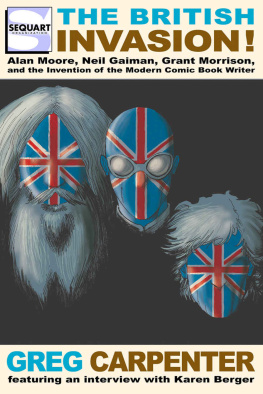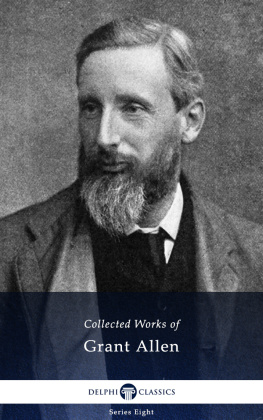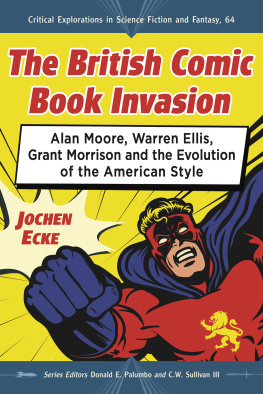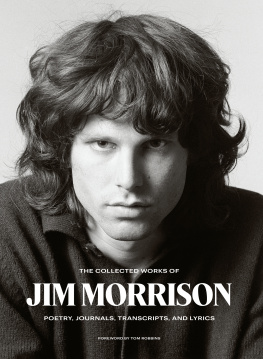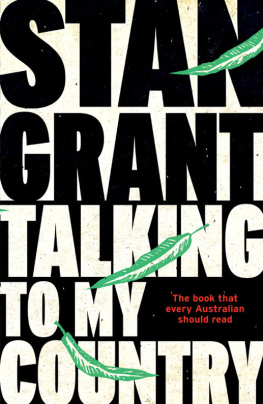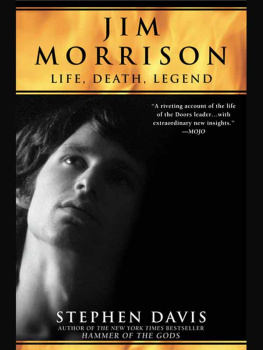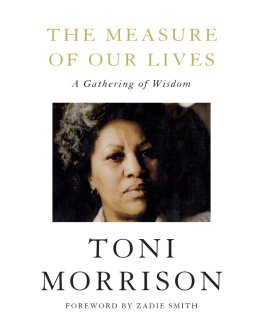Copyright 20 , 2011 Patrick Meaney . The Invisibles and related characters are and Grant Morrison .
Kindle edition , January 2012. First edition, January 2010. Revised first edition, November 2011 .
All rights reserved by the author. Except for brief excerpts used for review or scholarly purposes, no part of this book may be reproduced in any manner whatsoever, including electronic, without express written consent of the author.
Cover by Kevin Colden and Miss Lasko-Gross . Design by Julian Darius. Interior art is Grant Morrison ; please visit dccomics.com .
Published by Sequart Research & Literacy Organization . Edited by Julian Darius and Mike Phillips , with Matthew Elmslie , Kevin Thurman , Susan Veghte , Cody Walker , and Alan Williams .
For more information about other titles in this series, visit Sequart.org/books .
Diff erent Every Time: An In troduction
by Timothy Callahan
When I finished my book (appropriately titled Grant Morrison: The Early Years ) on Grant Morrisons early years well, his early, mostly American, super-hero years and started doing interviews about my analysis of Morrisons writing, I was always asked, Whats next?
And I assumed, back then in the now-distant days of 2007, that Id continue my exploration of Morrison and complete a trilogy, following The Early Years with The Psychedelic Years (covering his work around the time of JLA and The Invisibles ) and The Millennial Years (analyzing everything from Marvel Boy through Batman and whatever else he finished by the end of 2009 or so). So I told people about that plan, and it all sounded good. Then, in the s pring of 2007, I began the research on the inevitable next volume of Morrisonian analysis.
But then I hit a wall. An Invisible wall.
I decided, pretty early on in the research stage, that the only way to do justice to Grant Morrison: The Psychedelic Years would be to pay close attention to the three volumes of The Invisibles . The Invisibles , without a doubt, was the keystone to that era of Morrisons writing its perhaps the keystone to all of his writing. And the only way to fully understand The Invisibles , I thought, was to immerse myself in the works of literature, art, and music which inspired Morrisons work on that series. So as I reread all the issues of The Invisibles , I started making a list. A list of everything Morrison alluded to in the comic: from the Beatles to Department S, from The Prisoner to Maya Deren, from Jerry Cornelius to the I-Ching.
It became a massive list.
Three columns wide, on yellow legal paper, for pages and pages.
And then I started the immersion, watching everything Morrison watched, reading everything Morrison read, listening to everything Morrison listened to. I could have written a half-hearted analysis of The Invisibles just by reading the comic and relying on Wikipedia, I suppose, but I wanted to do it justice. I wanted to do all the research the hard way. I wanted to know all the secrets The Invisibles had to teach. But I soon realized, after reading too much Philip K. Dick and spending too much time trying to track down British TV shows from the 70s, that to do what I set out to do, I would practically have to become Grant Morrison. And I didnt want to do that. I didnt want to do that at all.
So I walked away from the project. I stacked up my research materials in the basement and turned to other things.
Luckily, Patrick Meaney wasnt as easily discouraged.
Meaney has taken on the challenge of The Invisibles , picked up Morrisons dense weave of allusion and philosophy, and slammed everything into his agile brain to produce a book that will stand, not as a handbook to Morrisons most important work but as a companion piece. Its Morrison-filtered-through-Meaney, and by exploring the connective tissue between the issues of The Invisibles , Meaney has not only helped to explain what it all means but has also described what makes it all so remarkable. The Invisibles is not a perfect work of graphic narrative, and Meaney knows that, but the ideas behind the comics the concepts that bleed out from between the panel borders and beneath the ever-shifting archetypal characters make for a hearty intellectual meal.
And you dont need to have read everything Morrison read to know that.
As far as my own comic- book explorations go, I never lost interest in Morrisons work, spending far too much time exploring his run on Batman through semi-sincere annotations on my blog and writing essays and articles on All Star Superman and Final Crisis for Comic Book Resources. But I never really went back to delve deeply into The Invisibles again, even though I made reference to it vaguely, in various things I have written, in the past couple of years. For me, lacking the head-screwed-on-straight practicality of Patrick Meaney, The Invisibles was a monolith of allusion so dense that I would have to lose myself to climb to its peak. It wasnt worth the trouble, I told myself.
But to do justice to Meaneys book, to read it in the proper context, I had to revisit The Invisibles . I sat down over a long weekend and reread all seven trade paperback collections.
Reread is the wrong word, I suppose, because this was the first time I read the entire series in trade paperback format. I read it once, when it was originally released in serialized, monthly issues (with breaks between volumes, of course) . I read the whole thing again in maybe 2001 or 2002. And then I read all the issues again in 2007, right after putting the finishing touches on Grant Morrison: The Early Years (back in those innocent days when I thought I might have three Morrison books in me). But this was the first time I read it straight through, without ads or letter columns. And I think that helped me to focus on the story itself, without thinking about all the extraneous information. It also helped that, this time, I flatly rejected reading The Invisibles as just one (admittedly massive) part of a larger Morrisonian source-material canon. I just wanted to read what was on the page of the comic book, without even thinking about the relationship between Jason King and Mister Six and John Byrnes drawings of Mastermind in Uncanny X-Men and all the implications therein.
Heres what I discovered, reading The Invisibles quickly, with a se lf-adopted n a vet: The Invisibles is as complex as you want it to be.
When I wanted it to be densely packed with allusion and symbolic meaning (or, when I thought I wanted it that way), it was, and it was too overwhelming for me. Every allusion I found would trigger five more research-laden path ways, and it became a labyrinth from which I could never escape. Except by rejecting it entirely.
When I wanted it to just be a story about a group of rebels fighting against an oppressive order, thats what it became. Its simplicity was shocking, even when there were clearly elements that didnt quite fit into the overall picture. But at its core, The Invisibles takes Morrisons implicit interests and makes them explicit. The subtext of his other work becomes the surface text in The Invisibles , and that makes the meaning far from hidden. Its right there, on every page, and its not difficult to decipher. If thats all you want from it: a meaning.
Then again, as Meaney says in the opening chapter of this book, Its impossible to tell someone the right answers when it comes to the series. He invokes King Mob, who tells us, I t s different every time.
So let s call it my meaning, this time around, instead of a meaning. My meaning, this time around, involved a straightforward reading of The Invisibles ( one that failed to worry about the complexity of the fourth-dimensional narrative and it s intersection with reality, so cogently explicated by Meaney ) and a few though ts about its thematic concerns.


